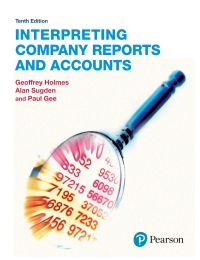Help Sav Grainger: U.S. Distribution In the United States, approximately 40 percent of the containers enter in Seattle, Washington, and 60 percent at the Los Angeles, California, port. Containers on arrival at the port cities are inspected by federal agents and then loaded onto rail cars for movement to the Kansas City distribution center. Variable costs for processing at the port are $4.00 per cubic meter (CBM) in both Los Angeles and Seattle. The rate for shipping the containers to Kansas City is $0.0016 per CBM per mile. In Kansas City, the containers are unloaded and processed through a quality assurance check. This costs $5.00 per CMB processed. A very small percentage of the material is actually sent back to the supplier, but errors in quantity and package size are often found that require accounting adjustments. items are stored in the Kansas City distribution center, which serves nine warehouses in the United States. Items are also sent to warehouses in Canada and Mexico, but for the purposes of this study we focus on the United States. The nine warehouses each place orders at the distribution center that contains all the items to be replenished. Kansas City picks each item on the order, consolidates the items onto pallets, and ships the items on 53-foot trucks destined to each warehouse. Truck freight costs $0.0216 per CBM per mile. The demand forecasts for the items purchased from China/Taiwan for next year in cubic meters and shipping distances are given in the following table DEMAND (CBM) DISTANCES WAREHOUSE MILES FROM AVERAGE MILES FROM KANSAS CITY MILES FROM LOS ANGELES Kansas City SEATTLE 20,830 Cleveland 1,510 1,820 16,980 850 Newark 2,230 24,670 Jacksonville 1,250 2,640 15, 140 2,800 1,190 Chicago 22,730 510 Greenville 2,090 Memphis 2,270 2,910 16,980 1,890 Dallas 2,240 1,510 Los Angeles 2,200 34,130 1,510 1,050 Total 189,330 2,450 2,400 15,140 2,980 2,100 920 500 490 22,730 Although a high percentage of demand was from warehouses either south or east of Kansas City, the question has surfaced concerning the 18 percent that will be shipped to Kansas City and then shipped back to the Los Angeles warehouse. This double- transportation could potentially be eliminated if a new distribution center were built in Los Angeles. The idea might be to ship material arriving at the Seattle port by rail to a new Los Angeles distribution center (at a cost of $0.0018 per CBM per mile), which would be located at the current location of the Los Angeles warehouse. It is estimated that the Los Angeles facility could be upgraded at a one-time cost of $1,500,000 and then operated for $350,000 per year in the new Los Angeles distribution center, containers would be unloaded and processed through a quality assurance check, just as Is now done in Kansas City. The variable cost for doing this would be $4.00 per Cem processed, which includes the cost to move the containers from the Los Angeles port to the distribution center After the material is processed in Los Angeles, the amount needed to replenish the Los Angeles warehouse (approximately 18 percent) would be kept and the rest sent by rail to Kansas City, it would then be directly stocked in the Kansas City distribution center and used to replenish the warehouses. Grainger expects that very little would need to be shipped back to the Los Angeles warehouse after the new system was operating for about six months Grainger management feels that it may be possible to make this change, but it is not sure if it would actually save any money and whether it would be a good strategic change. Relative to the U.S. distribution network, calculate the cost associated with running the existing system. Assume that 40 percent of the volume arrives in Seattle and 60 percent in Los Angeles and the port processing fee for federal processing at both locations is $4.00 per CBM. Assume that everything is transferred to the Kansas City distribution center by rail, where it is unloaded and quality checked. Assume that all volume is then transferred by truck to the nine existing warehouses in the United States. (Do not round intermediate calculations and round your answers to the nearest whole number. Leave the cells blank, whenever zero (O) is required.) Volume K.C Distribution Center Only Port to DC Costs Port Distance to CBM Processing K.C 189,330 $ 400 Rail Costs K.C. Unload and Q.C Total Costs Pct $ 0.0016 $ 500 Basic data Seattle port LA port % $ 0 % $ 0 $ 0 K.C Distribution Center Only DC to Warehouse Costs Truck Freight Warehouse Costs Kansas City Cleveland Newark Jacksonville Chicago Greenville Memphis Dallas Los Angeles Total Total cost of current system $ 0










